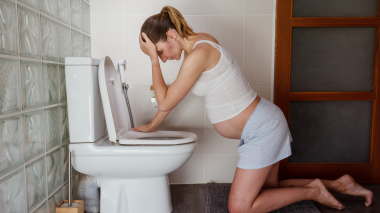Like a lot of the things we love about summer – sun, barbecue, adult beverages – flip-flops are best enjoyed in moderation.
From their humble roots thousands of years ago to becoming a worldwide fashion accessory, the flip-flop has long been the go-to footwear of summer. While flip-flops provide some level of basic protection, it’s not the best idea to play sports or hike trails in them. In fact, prolonged use of cheap, poorly made flip-flops has been linked to foot problems.Know When to Flip-Flop
Wearing flip-flops for long periods of time can harm your feet, legs, knees and lower back, says Catherine Rainbow , MD, a sports medicine and injury care doctor with Carolinas HealthCare System. When you wear them, they force your toes to curl while you walk – that unnatural movement changes your gait and can cause long-term damage or injury over time. So, when shopping for flip-flops, Dr. Rainbow suggests avoiding flimsy varieties that can easily twist in your hands. Instead, look for sandals that have extra support and a sturdier, thicker, well-made sole. Unlike athletic shoes, flip-flops aren’t good for walking long distances. They offer little to no arch support, heel cushioning or shock absorption, according to the American Podiatric Medical Association. WebMD lists flip-flops among the worst shoes for your feet.Flip-Flop in Moderation
If you’re casually hanging out at a backyard barbecue, feel free to reach for your flip-flops. For activities, such as shopping or gardening, consider wearing something with a little more support. If you’re walking more than a half-mile – about 10 city blocks – choose sturdier footwear.5 Fun Flip-Flop Facts
- The flip-flop dates back as early as 4000 BC and is one of the oldest forms of footwear.
- Nearly every modern civilization has a form of the flip-flop.
- They first appeared in America after World War II, as soldiers brought the Japanese version, called a Zori, back as souvenirs.
- It’s estimated that global flip-flop sales make up a $20 billion industry.
- In 2006, flip-flop sales surpassed athletic shoe sales for the first time.
5 Cons of Flip-Flops
- They expose your feet to bacteria, increasing the risk of viral and fungal infections.
- They increase your risk of tripping, slipping or twisting an ankle.
- Walking in flip-flops amplifies the heel-strike impact, which can cause pain over time.
- When you wear flip-flops, your toes work extra hard to keep the shoe on your foot. This potentially can cause hammertoe, an abnormal bend that puts excess pressure on the toe.
- Because the super-flat shoes don’t bend like your foot when you walk barefoot, they can negatively affect posture.



